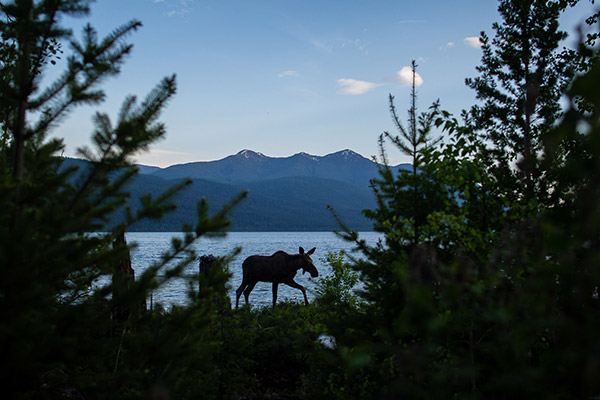Last updated: December 29, 2020
Lesson Plan
What Is Wild?

- Grade Level:
- Lower Elementary: Pre-Kindergarten through Second Grade
- Subject:
- Science,Social Studies
- Lesson Duration:
- 60 Minutes
- Additional Standards:
- NGSS K-ESS3-1. Use a model to represent the relationship between the needs of different plants & animals and the places they live.
K-ESS2-2. Construct an argument supported by evidence for how plants and animals change the environment to meet their needs
Essential Question
How is a "wild place" different than your home?
Objective
Students will be able to:
Identify similarities and differences between their home and wild places.
Know that wilderness is a place not developed by or for humans.
Background
This lesson plan is from the Wilderness Land Ethic Curriculum, Arthur Carhart National Wilderness.
In 1974 President Nixon recommended to Congress most of glacier National Park be designated as Wilderness. Congress has not acted on that proposal but 95% of the park has been managed as wilderness since 1974. (Presently, all developed areas are excluded from proposed wilderness.) Many children have never visited wilderness, though they may have images from stories or movies of what such places would look like. Drawing on students’ own experiences and perceptions, these activities introduce the concept of wilderness by comparing wild places to developed places. The levels of distinction students make will vary with their experience, age, and the location of your community. A good definition of wilderness for young children is that of a place influenced by the forces of nature, where people visit, but do not live. The Wilderness Act of 1964 defines wilderness “in contrast with those areas where man and his own works dominate the landscape, as an area where the earth and its community of life are untrammeled by man, where man himself is a visitor who does not remain.” Rod Nash, wilderness historian, believes that wilderness is so heavily weighed with meaning of a personal, symbolic, and changing kind that it is difficult to define.
Preparation
- 3 large writing papers
- Magazines (to cut up)
- Animal Drawings (end of packet)
- Glue
- Scissors
Procedure
- Share with your students your own definition of “wildlands” or “wild place.” You might also want to ask them to share their perceptions of these words with you. Write all the words on the board. Explore the feelings associated with the word “wild.” How does the word make you feel? Then add “erness”. Wilderness areas are places that are wild. Glacier is considered a wilderness.
- Tell students that your are going to take an imaginary trip to Glacier National Park, a place that is wild. Create your own story or use the following scenario to stimulate students’ thinking. Students could act out the story you describe. You may even wish to arrange chairs as the seats of a school bus and have students “climb aboard.”
- “Imagine we are all going to put on our hiking clothes (describe what these will be depending on weather for your trip), and pack our backpacks with our lunches and drinks for the day in the wild. We are going to travel in our magic school bus...everyone aboard and take a seat! We’ll drive through town and past neighborhoods until we can’t see highways, stores or gas stations. We drive a long time. It is such a long way, that everyone goes to sleep! The bus keeps moving until finally it stops at the edge of a wild place. You can hear a few quiet sounds. It smells clean and looks all green. Before you open your eyes, make a picture in your mind of what you might see in this wild place.”
- On a paper labeled “wild” write down images as students share them. Encourage students to be specific in their descriptions. Also have a paper labeled “developed” and record things students saw as they were leaving their school/city. Label the third paper “both.” For example, people belong in both places, as well as plants and animals. But the types of plants and animals may differ and the numbers of them and/or people may be different.
- Review words generated in the above activity and use magazines and the animal drawings in this packet to make collages of things that may be found in a wild place and those found in developed areas around cities and towns. Remember to mention that we all share the same air, water, soils, and scenic views that are exchanged between wild and developed areas.
- Have them think about how Glacier National Park has been designated to be a wild place and some of the reasons why we need wild places (peacefulness, home for wild animals, place to study nature, clean water source, etc.).
Extension
- Look at maps and see what other wilderness areas exist in northwest Montana. What about other areas of the state?
- Borrow the “Wilderness Trunk” from Flathead National Forest to find more resources and lessons about wilderness.
- Look for more storybooks in your library about wilderness.
- Complete the My World activity on Glacier’s website
Vocabulary
Habitat, national park, protection, wilderness.
Assessment Materials
Have students share ways their home is different and similar to a wild place.
